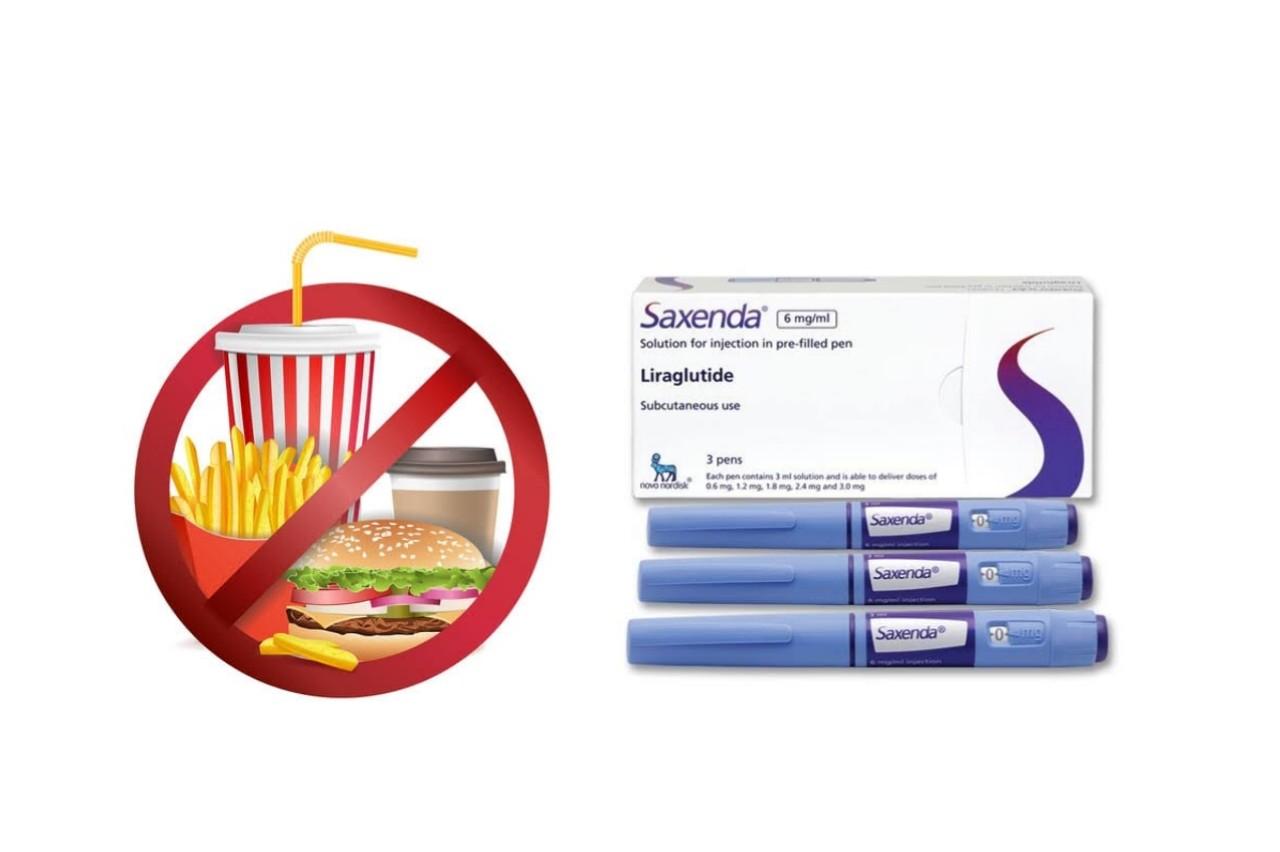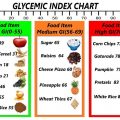Taking a medicine at the same time you eat can cause your body not to absorb the medicine. Or certain foods may delay or decrease the absorption of the drug.
Some medicines cannot be taken with certain types of food. The food can cause a reaction that changes the effect of the medicine. It also can create or heighten side effects.
What is Saxenda?
Saxenda (liraglutide) injection 3 mg is an injectable prescription medicine used for adults with excess weight (BMI ≥27) who also have weight-related medical problems or obesity (BMI ≥30), and children aged 12-17 years with a body weight above 132 pounds (60 kg) and obesity to help them lose weight and keep the weight off. Saxenda should be used with a reduced calorie diet and increased physical activity.
- Saxenda and Victoza® have the same active ingredient, liraglutide, and should not be used together or with other GLP-1 receptor agonist medicines.
- It is not known if Saxenda is safe and effective when taken with other prescription, over-the-counter medicines, or herbal weight-loss products.
- It is not known if Saxenda is safe and effective in children under 12 years of age.
- It is not known if Saxenda is safe and effective in children aged 12 to 17 years with type 2 diabetes.
How does Saxenda work?
Saxenda addresses one of your body’s natural responses to weight loss. Your body naturally produces an appetite hormone known as glucagon-like-peptide (GLP-1) that helps to regulate your hunger. Saxenda works like GLP-1 by regulating your appetite, which can lead to eating fewer calories and losing weight.
What is the most important information I should know about Saxenda?
Serious side effects may happen in people who take Saxenda, including:
Possible thyroid tumors, including cancer. Tell your health care professional if you get a lump or swelling in your neck, hoarseness, trouble swallowing, or shortness of breath. These may be symptoms of thyroid cancer. In studies with rats and mice, Saxenda and medicines that work like Saxenda caused thyroid tumors, including thyroid cancer. It is not known if Saxenda will cause thyroid tumors or a type of thyroid cancer called medullary thyroid carcinoma (MTC) in people.
Do not use Saxenda if you or any of your family have ever had MTC, or if you have an endocrine system condition called Multiple Endocrine Neoplasia syndrome type 2 (MEN 2).
Who should not use Saxenda?
Do not use Saxenda if:
- you or any of your family have ever had MTC or if you have MEN 2.
- you are allergic to liraglutide or any of the ingredients in Saxenda.
- you are pregnant or plan to become pregnant. Saxenda may harm your unborn baby.
Before taking Saxenda, tell your health care provider about all of your medical conditions, including if you:
- are taking certain medicines called GLP-1 receptor agonists.
- have severe problems with your stomach, such as slowed emptying of your stomach (gastroparesis) or problems with digesting food.
- have or have had problems with your pancreas, kidneys or liver.
- have or have had depression or suicidal thoughts, or mental health issues.
- are breastfeeding or plan to breastfeed. It is not known if Saxenda passes into your breast milk. You and your health care provider should decide if you will use Saxenda or breastfeed.
Tell your health care provider about all the medicines you take, including prescription, over-the-counter medicines, vitamins, and herbal supplements. Saxenda slows stomach emptying and can affect medicines that need to pass through the stomach quickly. Saxenda may affect the way some medicines work and some other medicines may affect the way Saxenda works. Tell your health care provider if you take diabetes medicines, especially insulin and sulfonylurea medicines.
How should I use Saxenda?
Inject your dose of Saxenda under the skin (subcutaneously) in your stomach area (abdomen), upper leg (thigh), or upper arm, as instructed by your health care provider. Do not inject into a vein or muscle.
What to Eat and Foods To Avoid While On Saxenda?
While taking Saxenda eat:
- Eat bland diet
- Low-fat foods, like crackers, toast, and rice.
- Eat foods that contain water, like soups and gelatin.
There are no specific foods that you must exclude from your diet while on Saxenda. Nevertheless, for best results you should avoid the following foods while on Saxenda;
- Processed and refined foods
- Food high in carbs.
How long will I stay on Saxenda?
Chronic diseases like obesity usually require long-term treatment. Your health care provider will create a plan tailored to your weight-management goals. You’ll need to visit your health care provider 4 months after you begin taking Saxenda to review your progress and renew your prescription.
What are the possible side effects of Saxenda?
Saxenda may cause serious side effects, including:
- Inflammation of the pancreas (pancreatitis). Stop using Saxenda and call your healthcare provider right away if you have severe pain in your stomach area (abdomen) that will not go away, with or without vomiting. You may feel the pain from your stomach area (abdomen) to your back.
- Gallbladder problems. Saxenda may cause gallbladder problems, including gallstones. Some gallbladder problems need surgery. Call your health care provider if you have any of the following symptoms: pain in your upper stomach (abdomen), fever, yellowing of your skin or eyes (jaundice), or clay-colored stools.
- Increased risk of low blood sugar (hypoglycemia) in adults with type 2 diabetes who also take medicines to treat type 2 diabetes such as sulfonylureas or insulin.
- risk of low blood sugar (hypoglycemia) in children who are 12 years of age and older without type 2 diabetes.
- Signs and symptoms of low blood sugar may include: shakiness, sweating, headache, drowsiness, weakness, dizziness, confusion, irritability, hunger, fast heartbeat, and feeling jittery. You should check your blood sugar before you start taking Saxenda and while you take Saxenda.
- Increased heart rate. Saxenda can increase your heart rate while you are at rest. Your health care provider should check your heart rate while you take Saxenda. Tell your health care professional if you feel your heart racing or pounding in your chest and it lasts for several minutes.
- Kidney problems (kidney failure). Saxenda may cause nausea, vomiting, or diarrhea leading to loss of fluids (dehydration). Dehydration may cause kidney failure, which can lead to the need for dialysis. This can happen in people who have never had kidney problems before. Drinking plenty of fluids may reduce your chance of dehydration. Call your health care provider right away if you have nausea, vomiting, or diarrhea that does not go away, or if you cannot drink liquids by mouth.
- Serious allergic reactions. Stop using Saxenda and get medical help right away if you have any symptoms of a serious allergic reaction including swelling of your face, lips, tongue, or throat, fainting or feeling dizzy, very rapid heartbeat, problems breathing or swallowing, or severe rash or itching.
- Depression or thoughts of suicide. You should pay attention to any mental changes, especially sudden changes, in your mood, behaviors, thoughts, or feelings. Call your health care provider right away if you have any mental changes that are new, worse, or worry you.
The most common side effects of Saxenda in adults include nausea, diarrhea, constipation, vomiting, injection site reaction, low blood sugar (hypoglycemia), headache, tiredness (fatigue), dizziness, stomach pain, and change in enzyme (lipase) levels in your blood. Additional common side effects in children are fever and gastroenteritis.





